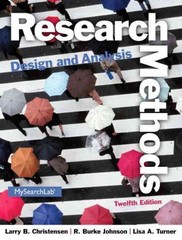Question
Consider the full version of the Solow model with both population growth and technology: Yt = F(K,LE). We will extend this version of Solow to
Consider the full version of the Solow model with both population growth and technology: Yt = F(K,LE). We will extend this version of Solow to also explicitly include the government. The national income accounts identity becomes:
Y = C + I + G
where Gt is government spending in period t. In order to fund its spending the government collects a tax Tt. Suppose for simplicity that the government runs a balanced budget Gt = Tt and that the tax collected is a constant fraction of output: G = T = Y. The remaining disposable income for households each period is (1 )Y. As in Solow we still assume that households save/invest a constant fraction s of their (now disposable) income. The population growth rate is n, techonology grows at g, and the depreciation rate is . (a) Assume for now that there is only private and no public investment (i.e all government purchases are spent on consumer goods and none of Gt is used to invest in capital). Write down the standard system - the equations for output, consumption, investment, and the capital accumulation equation. Define: yt = Yt/EtLt,
kt = Kt/EtLt,
it = It/EtLt,
ct = Ct/EtLt,
gt = Gt/EtLt. (b) Transform the model from part (a) in per- effective worker form and derive the steady-state equation for capital per effective worker. Draw a graph depicting the steady state. (c) What is the effect of higher tax rate on the steady state? Show the effect on your graph and explain the intuition for your answer. (d) Now suppose that, in addition to the case in part (a), a fraction of Tt is also invested in the capital stock, i.e. public investment equals Tt = Yt. What is total investment equal to now? Similarly to part (b) derive the steady-state equation for capital per worker and depict your answer on a graph. (e) Show that if is sufficiently high (i.e. you will need to find a specific threshold value), then the steady state capital per effective worker will increase as a result of higher taxation. Explain the intuition for your answer.
Step by Step Solution
There are 3 Steps involved in it
Step: 1

Get Instant Access to Expert-Tailored Solutions
See step-by-step solutions with expert insights and AI powered tools for academic success
Step: 2

Step: 3

Ace Your Homework with AI
Get the answers you need in no time with our AI-driven, step-by-step assistance
Get Started


